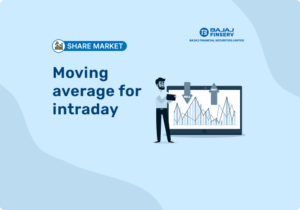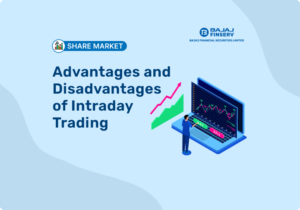Risk Management in Intraday Trading
Last Updated on January 31, 2024 by ethinos

Intraday trading is a trading technique where an asset is bought and sold on the same day. Since all open positions are closed by the end of the day, there’s no delivery of the asset. This reduces trading costs and enables you to use leverage. With leverage, you can control large positions by depositing just a fraction of the trade value as a margin.
Although this trading technique has several benefits, it also has its fair share of risks. Excessive market volatility and leverage are two major risks you will face during intraday trading. This is precisely why it is crucial to have proper trading risk management plans in place.
Table of Content [hide]
What is Risk Management in Trading?
In the context of trading, risk management is a strategy or a set of techniques that enable you to manage the various risks associated with trading. With robust risk management plans in place, you may effectively reduce trading losses arising due to the market moving against your expectations.
Why is Risk Management Important For Intraday Trading?
Intraday trading can be very fast-paced since it involves purchasing and selling an asset on the same day. As a trader, you will be required to make decisions quickly and in real-time. Such a stressful environment can lead to emotional decision-making, especially if the market is moving adversely.
Making trading decisions in an emotional state or on a whim can lead to significant losses. And even if you’re a trader who has good control over your emotions, your trades can still go against you if the market reacts in a manner opposite to your expectations.
This is precisely why market experts strongly suggest risk management for traders. Having a plan in place can help you effectively reduce risk, navigate adverse market movements, reduce losses and keep your emotions in check.
Contrary to popular opinion, there’s no one-size-fits-all risk management plan. A plan that works for one trader may not always work for you. Therefore, it is essential to formulate your very own plan based on factors like the nature of your trade, market trends and your targets. In fact, most traders often use a mix of multiple techniques to protect their trades.
What are Some Common Intraday Risk Management Techniques?
Position sizing, stop loss, trailing stop loss and support and resistance levels are four of the most common trading risk management techniques you can use. Here’s a closer look at each of these methods.
- Position Sizing
Position sizing refers to the practice where you determine the right amount of capital or the number of units for a trade. With the right position size for a trade, you can effectively minimise risk. Since leverage is actively used in intraday trading, determining the right position size is crucial to prevent losses. Market experts suggest using not more than 20% of your total available capital for an intraday trade.
- Stop Loss
Stop loss is one of the most used traders’ risk management practices. A stop-loss trade involves placing a limit order at a predetermined price below your purchase price. If the asset moves against your expectations and touches the predetermined price level, the stop-loss trade will instantly get executed, thereby limiting your losses. An ideal stop loss would be anywhere between 5% to 10% below your purchase price depending on market volatility and the asset you trade.
- Trailing Stop Loss
A variant of the traditional stop loss, a trailing stop loss is used to protect your gains. A trailing stop loss order is placed at a specific percentage or price below the current market price. As the asset continues to move in your intended direction, the stop loss also trails behind. Now, if the asset suddenly decides to reverse its direction, the trailing stop loss would get triggered, realising accumulated gains and limiting further losses.
- Support and Resistance Levels
Good risk management in trading involves accurately identifying support and resistance levels. A support level is a level below which an asset refuses to fall, whereas a resistance level is a level above which an asset refuses to rise.
Determining these levels can help you place a stop loss or trailing stop loss order accurately. Moreover, with support and resistance information, you can also identify potential entry and exit points for your intraday trades. For instance, you could place a buy order near support or a sell order near resistance if you expect the asset to bounce off these levels.
Conclusion
It is essential to note that risk management practices can only reduce risk and not eliminate it entirely. You may still end up with losses even with robust risk management plans in place, especially if the market is volatile. Therefore, it is important to carefully assess the nature of the various risks involved and formulate a trading risk management strategy tailored towards reducing these said risks.
Frequently Asked Questions
Risk management in day trading is the process of controlling the potential losses and maximising the potential profits from trading activities within the same day. Risk management in day trading involves several techniques, such as:
– Setting a trading plan that defines the entry and exit points, the risk-reward ratio, the position size, and the stop-loss and take-profit levels for each trade.
– Following the 1% risk rule, which means that you should not risk more than 1% of your trading capital on any single trade. This helps to limit your losses and preserve your capital.
– Diversifying your portfolio across different instruments, sectors, and markets to reduce the impact of market volatility and specific risks.
– Using technical analysis, indicators, and tools to identify the market trends, patterns, signals, and opportunities for trading.
– Keeping a trading journal that records your trades, results, emotions, and mistakes. This helps to evaluate your performance, identify your strengths and weaknesses, and improve your trading skills and strategies.
– Learning from your losses and successes, and constantly updating your knowledge and skills. You should also avoid emotional trading, overtrading, revenge trading, and greed.
Intraday trading is a high-risk activity that involves buying and selling securities within the same day. Intraday trading is risky because:
– It requires a high level of skill, knowledge, experience, and discipline to execute profitable trades in a fast-paced and dynamic market environment.
– It exposes you to market volatility, liquidity issues, price fluctuations, news events, technical glitches, and other unpredictable factors that can affect your trades.
– It involves using leverage or margin to amplify your returns, but also magnifies your losses. You may lose more than your initial investment if the market moves against you.
– It incurs higher fees and commissions due to frequent trading, which can eat into your profits. You also have to pay taxes on your short-term capital gains.
– It does not guarantee consistent returns or income. You may face losing streaks or drawdowns that can erode your capital and confidence.
People fail in intraday trading for various reasons, such as:
– Lack of proper education, research, analysis, and planning before entering a trade. They may rely on tips, rumours, or gut feelings instead of facts and data.
– Lack of proper risk management techniques, such as setting stop-losses, taking profits, diversifying portfolio, limiting exposure, etc. They may risk too much or too little on each trade.
– Lack of proper trading discipline and psychology. They may let their emotions such as fear, greed, anger, or frustration influence their trading decisions. They may also deviate from their trading plan or break their own rules.
– Lack of proper trading tools and resources. They may use outdated or unreliable platforms, software, charts, indicators, or signals. They may also face technical issues or errors that can disrupt their trades.
– Lack of proper evaluation and improvement. They may not keep track of their trades or results. They may not learn from their mistakes or successes. They may not adapt to changing market conditions or trends.

